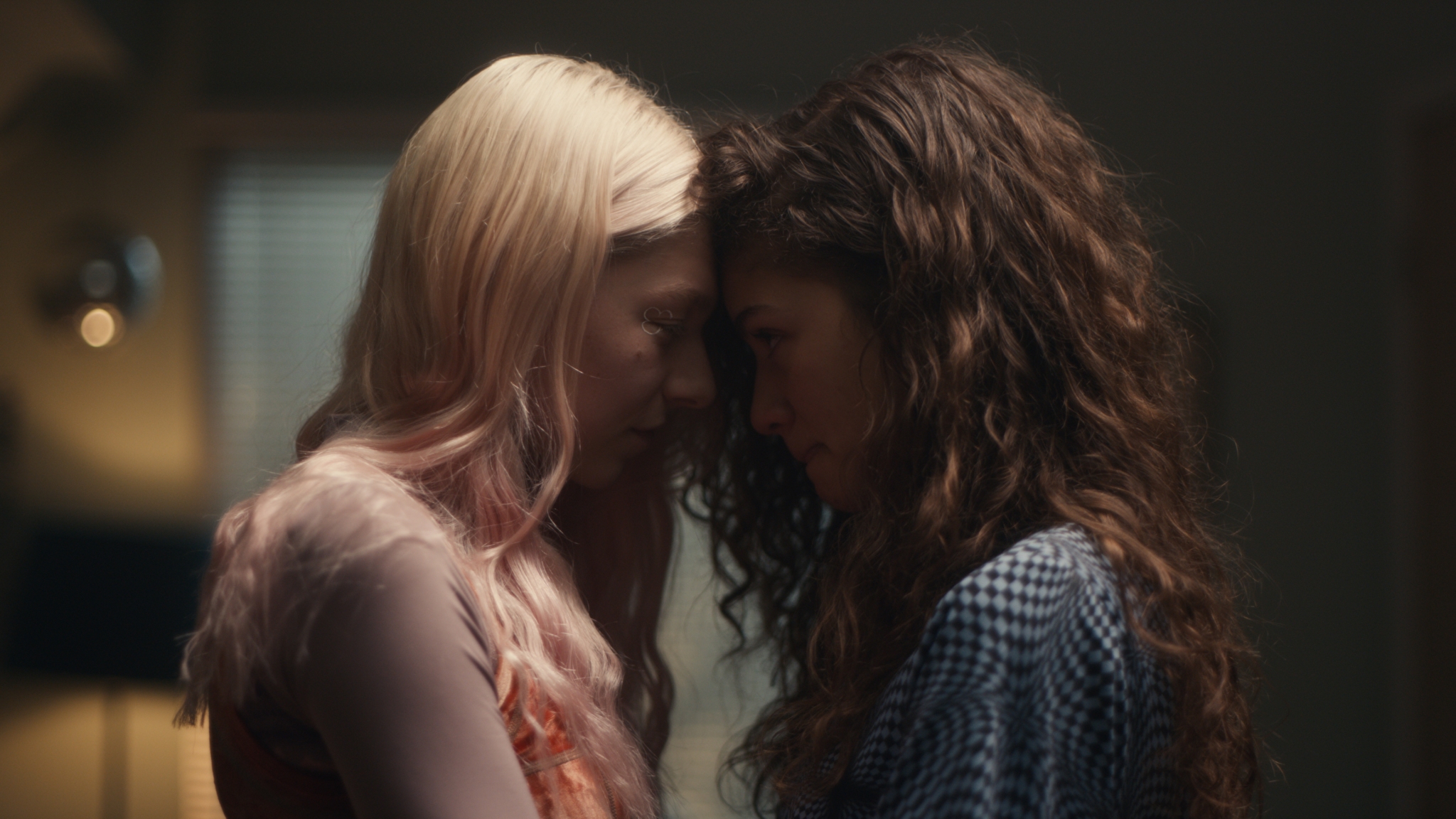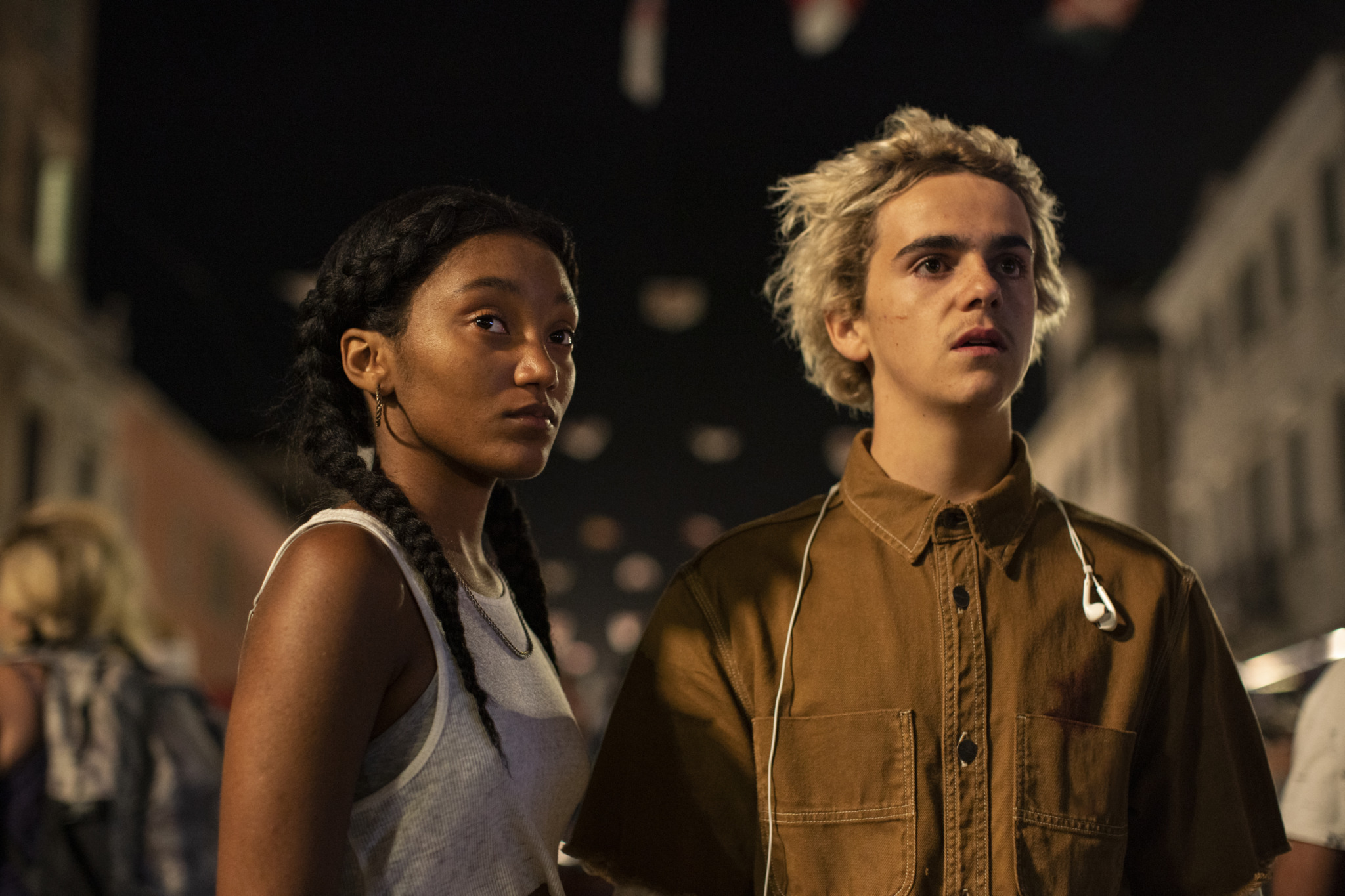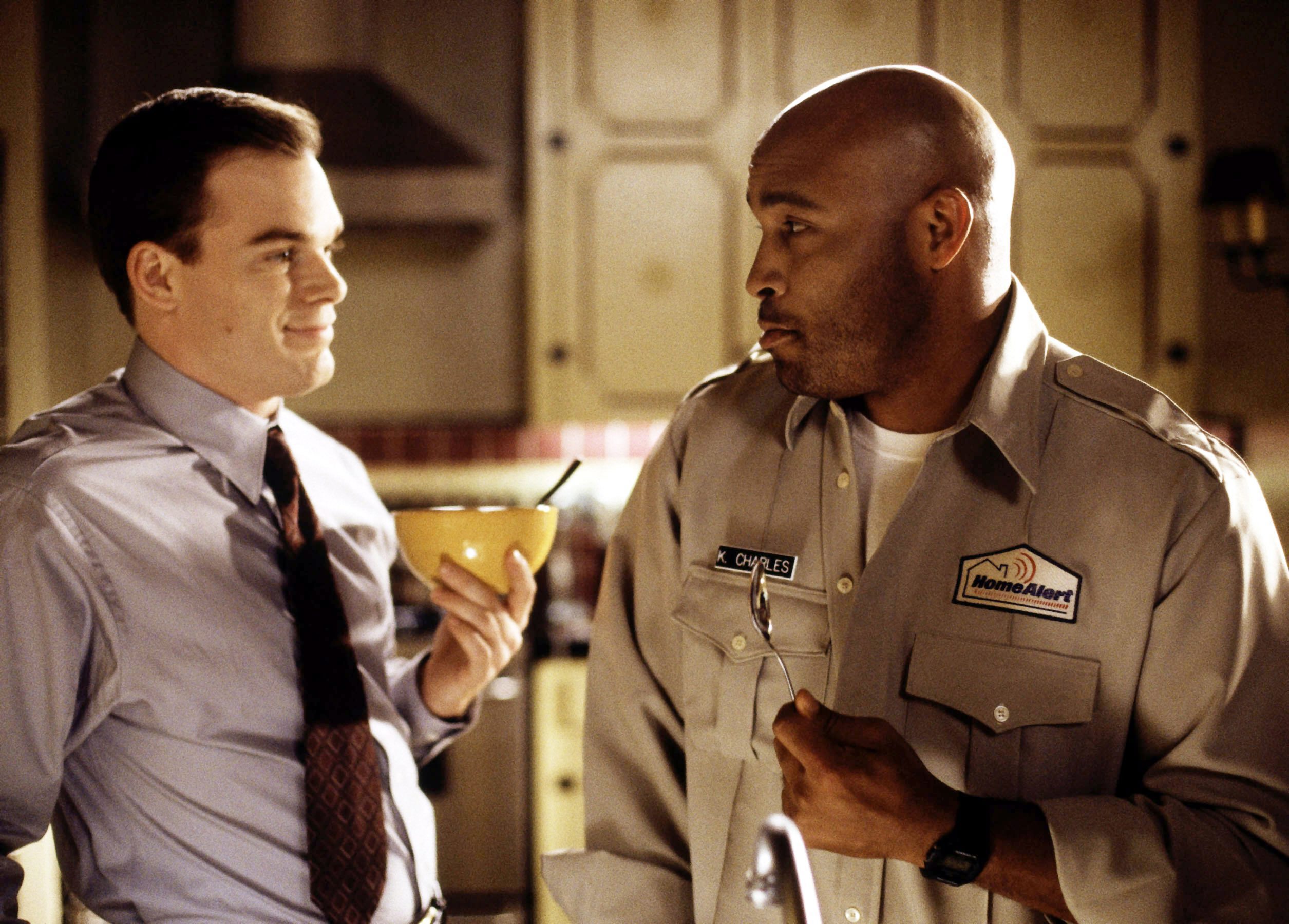When openly gay Hollywood powerhouse Alan Ball was pitching what became his first hit TV show, the funeral home drama Six Feet Under, the famed note he got from HBO was short: “We love the characters. We love the story, but the whole thing feels a little safe. Can it be more fucked up?”
Whatever that first draft was, the first season of Six Feet Under contained straight strangers fucking in a closet at an airport, a hearse-driving teenage girl smoking meth, a porn star electrocuted in a bathtub and a six-year-old accidentally shooting himself. Funeral home operator David Fisher, played by the mostly straight actor Michael C. Hall, may have been one of television’s first three-dimensional depictions of a gay man. But much of what the tightly wound David did—take E on the dancefloor, have bareback sex with a prostitute in a Las Vegas parking garage, indulge in a three-way with his African-American partner and another buddy, pick up a menacing hitchhiker—seemed to have been more about the audience’s thrills than his own.
Of course, Six Feet Under, which debuted in 2001, was not the first HBO show to use sex, drugs and violence to capture viewer interest in otherwise philosophically and sociologically astute prestige programming. Fans of Oz, HBO’s first hour-long dramatic series, which debuted in 1997, were mesmerized by the amount of male nudity—and same-sex rape—that punctuated the show’s critique of the prison-industrial complex. The Sopranos, which debuted in 1999, leaned so hard into violence that the sex was only lightly sprinkled, usually in the form of gyrating strippers at the Bada Bing club where mob boss Tony Soprano liked to hold meetings. Ball himself went on to make True Blood, which debuted in 2008, about vampires of many sexual orientations and the mortals killed and fucked by them (and vice versa).
“Are the young, sometimes vulnerable characters on these shows being exploited for ratings and in an attempt to go viral?”
To keep the feels coming, HBO seems to have been lowering the age limit on “fucked up” and queering it. In the last couple of years, the channel (and now streaming service, in the form of HBO Max, whose programming appears on Crave in Canada) has unleashed not one, not two, but three shows that foreground queer and trans teens placed in situations ranging from extremely dangerous to intensely sexual: Euphoria, We Are Who We Are and, this spring, Genera+ion. Though the broadcaster has been widely praised for its inclusion of LGBTQ2S+ characters—and representation is a great thing—you have to wonder if the queer youth on these shows, sometimes so vulnerable, are also being exploited for ratings and in an attempt to go viral.
Having young lead characters is an easy way to amp up the jeopardy. When, on Six Feet Under, poor Claire Fisher (Lauren Ambrose) felt she was getting played by a sexually confused boyfriend, it was all the more painful because she was college-aged. Stories about young people in the process of breaking boundaries around gender and sexuality seem like the newest and most highly calibrated means to troll viewers, in the same way that Samantha’s smutty talk (in Sex and the City) and Rome’s full male nudity captured the attention of viewers in earlier decades. But exploring one’s sexual and gender identity, though it may be clickbait for older generations, shouldn’t be treated as the equivalent of gore, gratuitous nudity and sexual violence.
Perhaps there are teenagers who watch HBO’s Euphoria and say, “This show gets everything about my life just right.” I’m not in that demographic. But I’m sure many parents—the people who usually pay for cable and streaming services—watch the nihilistic drama about a high school drug addict finding her way through toxic masculinity and say, “Holy fuck, is that what kids are up to these days?” The show’s adult villain (played by Eric Dane) sums up the show’s world view just as he roughly and degradingly commits statutory rape against a trans minor: “I’m envious of your generation, you know, you guys don’t care as much about the rules. I think that’s a good thing. I don’t want to be the old guy who gives advice.” Except the show seems to be one big piece of advice to parents: Take away your kids’ phones and don’t let them out of your sight.
Euphoria, at a basic level, does not stigmatize the open and ambiguous sexuality of the lead cis female character Ru (Zendaya) or her trans female friend/love interest Jules (trans actor Hunter Schafer). Yet the show introduces both of them as broken—Ru as living with OCD and addiction, Jules as someone who cuts her own arm when threatened at a party. And though their friendship/romance is one of the show’s only sweet elements, it is also shallow and idealized, communicated through lovely lighting and handholding, as if the straight showrunner was at a loss for how to get inside a relationship between a cis and a trans woman. I hate to say this in front of the “Rules” shippers: They could as easily be swapped out for a straight couple, except that wouldn’t be as cool for the kids or as weird for the ’rents.

Credit: Courtesy of HBO
Ru and Jules are lucky, though, that Euphoria allows them a question mark over their relationship and desires. Look what drives the first-season mystery around the show’s young villain: Why does Nate (Jacob Elordi) have so many guys’ dick pics on his phone? As much as the characters talk about how sexuality is a spectrum, the show’s key curiosity is nailing down, with exact precision, what gets Nate off.
We Are Who We Are, created by Luca Guadagnino, the gay director of the 2017 film Call Me by Your Name, treats its queer youngsters with more tenderness, and grants them more room to grow. It’s less hypocritical. In fact, the show treats the ambiguities of gender and sexual orientation almost as fetish objects to be stared at and pondered. But again, the show places its lead character’s elusive sexuality right next to his brokenness: A minute into the first episode, fashion-obsessed 14-year-old Fraser (Jack Dylan Grazer) demands his lesbian mom (Chloë Sevigny) give him a drink of booze in public, which is just the start of a particularly warped mother-son relationship. Just like Euphoria’s Ru, Fraser develops an ambiguous friendship/romance—his with his classmate Caitlin/Harper (Jordan Kristine Seamón). But for Caitlin/Harper, the lines of gender identity are as in flux as those of sexual desire. For an adult storyteller, young characters’ capacity to be delightfully and endlessly unresolved must be a creative godsend. Flux is fodder. But is it revolutionary, as Guadagnino clearly wants it to be, or is it merely a handy method of freshening up an old story, stretching out the obstacles of a traditional rom-com, while pleasing execs at HBO?

Credit: Courtesy of HBO
With its arthouse aesthetic, We Are Who We Are uses visuals to claim its place among prestige dramas, but it still wheels out all the props necessary to push buttons: Out-of-control parties, with drunk and high teens humping in plain view of their peers (and we voyeurs at home), an adult male attempting to lure a 14-year-old boy into a threesome, a teenage wedding, a teen killed in a military manoeuvre, dangerous thrill seeking. The trappings are all cautionary tales, but when done with such lusciousness, they’re also a fantasy that seems designed to make suburban dads wonder if they should have been more fluid when they were younger.
Of the three shows, Genera+ion, on the new HBO Max platform, is the funniest because it’s less interested in showing young people having sex than with showing young people saying jaded things about sex. Yes, sure, an adult male in a position of authority ends up exchanging dirty pics with a male student on a hook-up app, but it’s cute, not creepy, because it’s a misunderstanding. And also cute because Genera+ion is clear, in the way We Are Who We Are is cagey, that the adult in question does not want to fuck the young person. Both approaches contrast with the way Euphoria makes it perfectly clear that adults do, indeed, want to fuck young people.
Created by an openly queer teenager (Zelda Barnz, now 19) with one of her gay dads (her other gay dad is merely an executive producer), Lena Dunham-backed Genera+ion’s focus is on repairable humiliation, not Euphoria’s self-annihilation or We Are Who We Are’s elusive bittersweet utopia. It has dick pics, of course, treats blowjobs like handshakes and gives us a mother putting up with her son Nathan (Uly Schlesinger) and his current girlfriend Arianna (Nathanya Alexander) talking dirty in the back seat because it could mean he’s less bisexual than he said he was.

Credit: Warrick Page/HBO
The mother in question, Megan (played by the marvelous Martha Plimpton), is Genera+ion’s villain. Her superpower is being willfully obtuse. “Did I need to know that there’s an entire category for bisexual cuckold porn?” she rants at her husband and a visiting gay couple, the parents of the aforementioned girlfriend. “I have the feeling that Nathan likes a little drama. They all do. They all like to say, ‘I’m this today,’ or ‘Today I’m that….’ Half the time they don’t even know what the words mean.” But this sitcom-style mom is also the audience surrogate, the befuddled adult who must puzzle through the swarming teenage identities and desires. Is she judgy and cruel? Yes. Does she, faced with the zigs and zags of the show’s plot, have a right to be confused? Also yes. You can smell the father-daughter dynamics that must have lit up the writers’ room. One of this show’s sweetest relationships is between shy female-attracted Greta (Haley Sanchez) and her do-whatever-you-want-honey mother-surrogate Aunt Ana (played by trans actor Nava Mau—the casting I’m highlighting is also a sign of how HBO is trying to keep up with the times).
The young queer and trans leads on this trio of HBO shows are certainly valorized more than the LGBTQ2S+ characters on HBO shows of yore. The script writers of Six Feet Under seemed to mostly pity David Fisher. True Blood’s ammoral gay vampire Russell Edgington gets shivved by a handsome, younger straight vampire. And let’s not talk about Vito Spatafore on The Sopranos, who was found dead with a pool cue up his ass, or anyone who was not macho on Oz. Ru, Jules, Fraser, Caitlin/Harper and Greta have enviable character traits, even as they’re misunderstood and abused.

Credit: Everett Collection/CP Images
You can tell that the character Chester (Justice Smith, who came out as queer in 2020) is completely adored by Genera+ion’s showrunners; he gets all the best scenes and lines. A biracial gay fashionista, Chester has a charisma that makes him beloved by his whole school, even when he’s being a bitch. That’s certainly a big step up from the days of the self-effacing gay best friend, like Sanford (mincingly played by straight actor Willie Garson) on Sex and the City.
Chester is also a gay type that many people these days will have in their own lives, casually confident, neither villain nor victim. And so you wonder: Is Chester even shocking enough to be on HBO? Maybe HBO has finally hit peak “fucked up.”


 Why you can trust Xtra
Why you can trust Xtra


